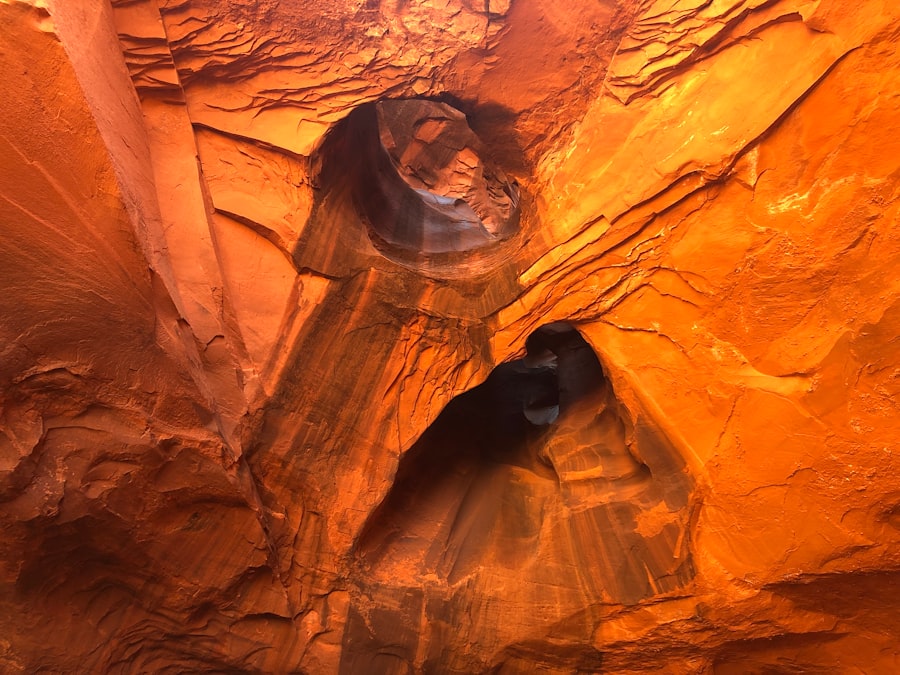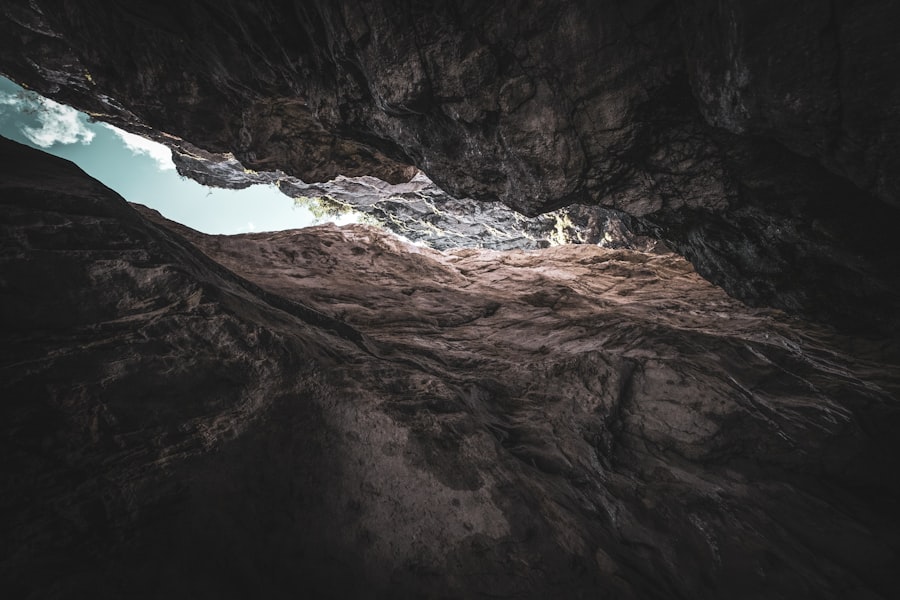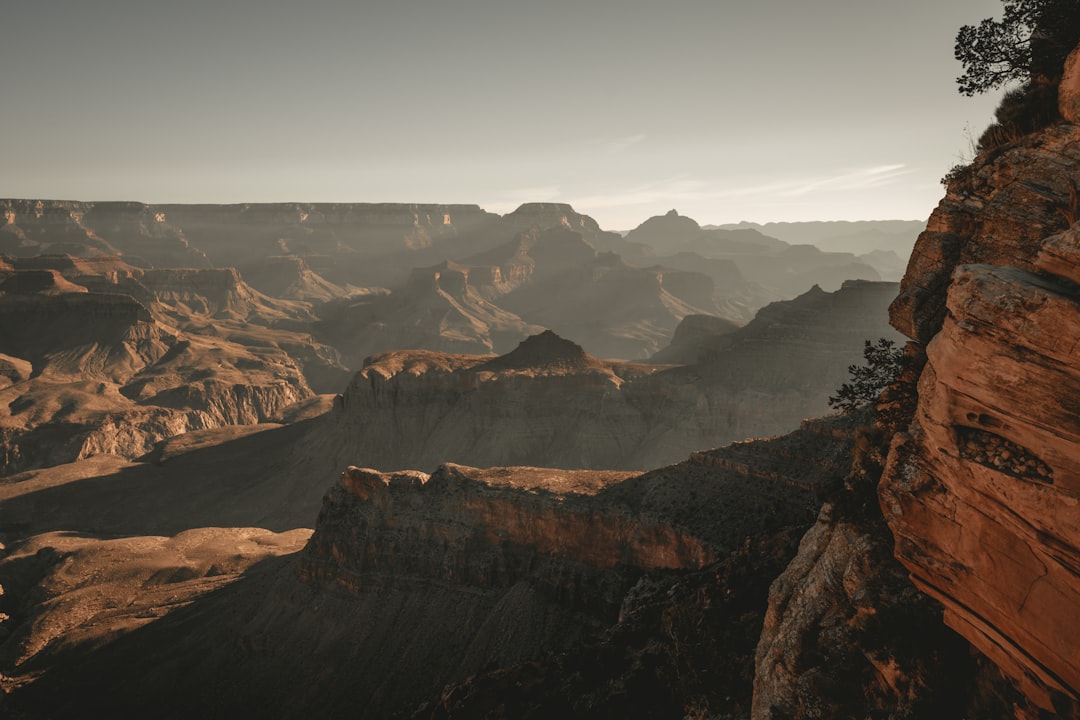The Grand Canyon, a natural wonder carved by the Colorado River, is not only renowned for its breathtaking vistas but also for its intricate network of caves. The history of these caves is as rich and layered as the canyon itself. Evidence suggests that the caves have been formed over millions of years through a combination of geological processes, including erosion and the dissolution of limestone.
The earliest known inhabitants of the region, the Native American tribes, recognized the significance of these caves long before modern explorers set foot in the area. They utilized the caves for shelter, storage, and spiritual practices, embedding their cultural narratives within the very walls of these subterranean spaces. As time progressed, the fascination with the Grand Canyon’s caves grew among explorers and scientists.
In the late 19th and early 20th centuries, adventurers began to document their findings, leading to a greater understanding of the geological and ecological significance of these formations. The discovery of notable caves such as the Cave of the Domes and the Redwall Cavern sparked interest in both scientific research and tourism. This period marked a turning point in how people perceived the Grand Canyon’s caves—not merely as dark recesses in the earth but as vital components of a larger ecosystem that deserved protection and study.
Key Takeaways
- Grand Canyon caves have a rich history dating back thousands of years, with evidence of human presence and exploration.
- The geological formation of the caves in the Grand Canyon is a result of millions of years of erosion and deposition, creating unique underground landscapes.
- The caves within the Grand Canyon house diverse and specialized ecosystems, including unique species adapted to the dark and often harsh conditions.
- Indigenous peoples have played a significant role in the exploration and understanding of the caves within the Grand Canyon, with cultural and spiritual connections to these underground spaces.
- Caving in the Grand Canyon offers an exhilarating adventure, with opportunities to explore hidden passages and witness stunning natural formations.
Exploring the Geological Formation of the Caves
The geological formation of the Grand Canyon’s caves is a testament to the forces of nature at work over eons. The primary rock types found in the canyon include limestone, sandstone, and shale, each contributing to the unique characteristics of the caves. The process of cave formation typically begins with water infiltrating cracks in the rock, gradually dissolving minerals and creating voids.
Over time, these voids expand into larger caverns, shaped by both chemical and physical weathering. The interplay between water and rock is crucial; as rainwater seeps through the soil, it becomes slightly acidic, allowing it to dissolve limestone more effectively. In addition to chemical processes, physical forces such as tectonic activity have played a significant role in shaping these caves.
The Grand Canyon itself is a product of uplift and erosion, with tectonic movements pushing rock layers upward while the Colorado River carves its path through them. This dynamic environment has resulted in a diverse array of cave systems, each with its own unique features and formations. The study of these geological processes not only provides insight into the history of the Earth but also helps scientists understand current environmental changes and their potential impacts on cave ecosystems.
The Unique Ecosystems Within the Caves

Within the depths of the Grand Canyon’s caves lies a world teeming with life, often unseen by those above ground. These subterranean ecosystems are characterized by their unique conditions—darkness, humidity, and stable temperatures—which create an environment unlike any other. Various species have adapted to thrive in this darkness, including bats, insects, and specialized microorganisms.
These organisms play crucial roles in maintaining the ecological balance within the caves, contributing to nutrient cycling and serving as indicators of environmental health. One fascinating aspect of cave ecosystems is their isolation from surface environments. This isolation has led to the evolution of unique species that are found nowhere else on Earth.
For instance, certain types of cave-dwelling fish have developed adaptations such as loss of pigmentation and eyesight, relying instead on heightened senses to navigate their dark surroundings. The study of these unique organisms not only enriches our understanding of biodiversity but also raises important questions about conservation and habitat preservation in an era of rapid environmental change.
The Role of Indigenous Peoples in Cave Exploration
| Indigenous Peoples | Cave Exploration |
|---|---|
| Traditional knowledge | Guiding cave expeditions |
| Cultural significance | Preserving cave sites |
| Environmental stewardship | Protecting cave ecosystems |
| Community engagement | Sharing cave stories and legends |
Indigenous peoples have long been stewards of the land surrounding the Grand Canyon, including its intricate cave systems. For thousands of years, tribes such as the Havasupai, Hopi, and Navajo have utilized these caves for various purposes—ranging from shelter to ceremonial sites. Their deep connection to the land has fostered a profound respect for its natural features, including caves that hold spiritual significance.
Many Indigenous stories and legends are intertwined with these subterranean spaces, reflecting their cultural heritage and understanding of nature. In recent years, there has been a growing recognition of the importance of Indigenous knowledge in cave exploration and conservation efforts. Collaborations between Indigenous communities and researchers have led to a more holistic approach to understanding cave ecosystems.
By incorporating traditional ecological knowledge with scientific research, a richer narrative emerges about how these caves function within both natural and cultural contexts. This partnership not only honors Indigenous perspectives but also enhances conservation strategies that benefit both people and the environment.
The Thrill of Adventure: Caving in Grand Canyon
For many adventurers, caving in the Grand Canyon represents an exhilarating challenge that combines physical endurance with exploration. The thrill of descending into dark caverns filled with stunning geological formations is an experience unlike any other. Enthusiasts often embark on guided tours or self-led expeditions to discover hidden chambers adorned with stalactites and stalagmites, each telling a story of time and natural processes.
The sense of wonder that accompanies such explorations is palpable; every twist and turn reveals new wonders waiting to be uncovered. However, caving is not without its challenges. Navigating through narrow passages and uneven terrain requires careful planning and preparation.
Adventurers must equip themselves with appropriate gear—helmets, headlamps, and sturdy footwear—to ensure safety while exploring these underground realms. Additionally, understanding cave etiquette is crucial; preserving delicate ecosystems while enjoying the thrill of exploration is a responsibility that every caver must embrace. The combination of adventure and conservation creates a unique experience that fosters a deeper appreciation for the natural world.
The Importance of Cave Conservation and Preservation

As interest in caving grows, so too does the need for effective conservation strategies to protect these fragile ecosystems. Caves are sensitive environments that can be easily disrupted by human activity. Foot traffic can damage delicate formations, while pollution from surface activities can seep into cave systems, threatening unique species that rely on these habitats for survival.
Recognizing this vulnerability is essential for ensuring that future generations can experience the beauty and wonder of Grand Canyon caves. Conservation efforts often involve collaboration among various stakeholders, including government agencies, conservation organizations, and local communities. Education plays a vital role in these initiatives; raising awareness about the ecological significance of caves can inspire individuals to take action in preserving them.
By promoting responsible caving practices and advocating for protective measures, it is possible to strike a balance between exploration and conservation—ensuring that these remarkable underground worlds remain intact for years to come.
The Fascinating Discoveries Within the Caves
The Grand Canyon’s caves have yielded numerous fascinating discoveries that continue to captivate scientists and explorers alike. From ancient artifacts left behind by Indigenous peoples to unique geological formations that provide insight into Earth’s history, each cave holds secrets waiting to be uncovered. Archaeological findings within these caves have shed light on past human activities, revealing how early inhabitants adapted to their environment and utilized available resources.
In addition to archaeological treasures, researchers have made significant strides in understanding cave ecosystems through scientific exploration. Discoveries of new species—such as previously unknown microorganisms or cave-dwelling insects—highlight the importance of ongoing research in these environments.
The Challenges of Cave Exploration in Grand Canyon
While caving offers thrilling adventures and opportunities for discovery, it also presents numerous challenges that explorers must navigate. One significant challenge is accessibility; many caves within the Grand Canyon are remote and require extensive hiking or climbing to reach. This physical demand can deter some would-be adventurers but also adds an element of excitement for those willing to undertake the journey.
Moreover, safety concerns are paramount when exploring caves. The potential for getting lost or encountering hazardous conditions necessitates thorough preparation and knowledge of cave systems. Weather conditions can also pose risks; sudden storms can lead to flash flooding within cave systems or make access treacherous.
As such, cavers must remain vigilant and informed about both environmental conditions and personal safety measures to ensure a successful exploration.
The Beauty of Stalactites and Stalagmites in Grand Canyon Caves
Among the most captivating features found within Grand Canyon caves are stalactites and stalagmites—mineral formations that have formed over thousands of years through dripping water rich in calcium carbonate. Stalactites hang from cave ceilings like icicles frozen in time, while stalagmites rise from the ground below, creating an otherworldly landscape that enchants visitors. These formations not only showcase nature’s artistry but also serve as indicators of environmental conditions over millennia.
The intricate patterns and colors found within stalactites and stalagmites tell stories about past climates and geological events. As water drips through rock layers, it leaves behind mineral deposits that accumulate over time, resulting in stunning formations that vary in size and shape. For many explorers, witnessing these natural wonders firsthand is a highlight of their caving experience—a reminder of nature’s ability to create beauty in even the most unexpected places.
The Experience of Spelunking in Grand Canyon
Spelunking—the recreational exploration of caves—offers an immersive experience that connects individuals with nature on a profound level. In the Grand Canyon, spelunkers are treated to an array of sights and sounds as they navigate through winding passages and expansive chambers filled with geological wonders. The thrill of discovery is palpable; each step taken into the depths reveals new formations and hidden alcoves waiting to be explored.
The experience is not solely about physical exploration; it also fosters a sense of camaraderie among fellow adventurers. Sharing stories around campfires after a day spent spelunking creates bonds that transcend individual experiences. As participants navigate challenges together—whether overcoming fears or solving navigation puzzles—they forge connections rooted in shared adventure.
This communal aspect enhances the overall experience, making spelunking not just an individual pursuit but a collective journey into nature’s depths.
The Future of Grand Canyon Cave Exploration
Looking ahead, the future of cave exploration in the Grand Canyon holds both promise and responsibility. As technology advances, new tools for mapping and studying cave systems are emerging, allowing researchers to gain deeper insights into these complex environments without causing harm. Innovations such as 3D scanning and remote sensing are revolutionizing how scientists approach cave research, enabling them to document changes over time more effectively.
However, with increased interest in caving comes an urgent need for sustainable practices that prioritize conservation efforts alongside exploration. Balancing adventure with ecological responsibility will be crucial for ensuring that future generations can enjoy these remarkable underground landscapes without compromising their integrity. By fostering a culture of respect for nature among adventurers and researchers alike, it is possible to pave the way for continued exploration while safeguarding one of Earth’s most extraordinary natural wonders—the caves of the Grand Canyon.
Exploring the Grand Canyon’s caves offers a unique glimpse into the geological and historical wonders hidden beneath its majestic surface. For those interested in delving deeper into the mysteries of these ancient formations, a related article on the topic can be found on XFileFindings. This article provides insights into the various cave systems within the Grand Canyon, discussing their formation, the unique ecosystems they support, and the archaeological significance they hold. To learn more about these fascinating subterranean landscapes, you can read the full article by visiting this link.
WATCH THIS! 👺 The Grand Canyon Cover-Up: Did the Smithsonian Hide Evidence of Giants?
FAQs
What are the Grand Canyon caves?
The Grand Canyon caves are natural underground chambers or passages within the Grand Canyon in Arizona, USA. These caves are formed through various geological processes such as erosion, dissolution, and volcanic activity.
How were the Grand Canyon caves formed?
The Grand Canyon caves were formed through a combination of erosion by water, dissolution by acidic groundwater, and volcanic activity. Over millions of years, these processes created underground chambers and passages within the limestone and sandstone layers of the Grand Canyon.
Are the Grand Canyon caves open to the public?
Most of the Grand Canyon caves are not open to the public due to safety concerns and the need to protect the delicate cave ecosystems. However, there are guided tours and expeditions available for experienced cavers to explore some of the caves with proper permits and equipment.
What can be found inside the Grand Canyon caves?
Inside the Grand Canyon caves, one can find unique geological formations such as stalactites, stalagmites, columns, and flowstones. These caves also provide habitats for various species of bats, insects, and other cave-dwelling organisms adapted to the dark and often harsh cave environment.
Are there any known dangers or risks associated with exploring Grand Canyon caves?
Exploring Grand Canyon caves can pose various risks and dangers, including the potential for getting lost, encountering hazardous wildlife, and facing physical challenges such as narrow passages and steep drops. It is important for anyone considering cave exploration to be properly trained, equipped, and prepared for the experience.
